Five Love Languages for Kids and Parents

I’ve never been a huge fan of Valentine’s Day (all the hype about dinner and dating and cards and hearts is a little much for me, plus the origins story isn’t pretty), but I have to say that it’s growing on me, courtesy of… motherhood.
As a mom, I now see the holiday as a fun excuse to indulge in some extra special time, crafts, treats (hot chocolate!), and snuggles with my two kiddos right smack in the dreary doldrums of winter.

Throughout the pandemic and now beyond, I have had to revisit our own Discipline Manifesto (part of our behavior series) SO MANY TIMES, and I always come away with a renewed commitment to be CALM. Yes: the ability to be present, calm, and loving can carry any parent through even the most heinous meltdowns and frustrating moments.
With this truth^ in mind, our entire team turned our attention to the ways we as parents can express our unconditional love to our children on the regular — with the ultimate goal of building loving expressions into our daily life — putting it at the center of our routines, habits, mannerisms.
Inspired by Gary Chapman’s book The Five Love Languages of Children, join us to put ❤️ at the center of your table. We’ll first explain Chapman’s premise — that people are (most) fluent in one of five different love languages — before describing how this pertains to our children. Then, we’ll offer a quick overview of each language, as well as some ideas for ways to connect with those people in your life — young or old — who speak in that language.
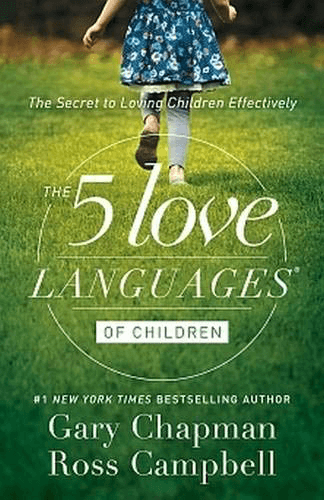
This can be a lot to take in… here’s a one-week challenge to make it into a funnnn little experiment: pick one week (M-F) and focus on expressing love to your child(ren) in a different language each day. You’re bound to learn a lot. And pssst: even if you don’t buy into the whole premise, this is still a wonderful way to love your kid with all you’ve got and to… diversify your portfolio. 😉
The Five Mother Tongues
The centerpiece of Chapman’s wildly-successful book series (which was initially written as a marriage guide) is that each human expresses and interprets love and affection differently.

Over the course of decades of marriage counseling, Chapman (he being the counselor 😉) identified and defined five different languages of love. They are:
We’ll delve into each one shortly, but right now let’s clarify the overarching concept of a “love language.” “Everyone gives and receives love differently,” Chapman says. Sounds nice, right? Diverse.
Here’s the snag: We all tend to speak our own language, which means giving love how we want to receive it — not necessarily ideal.
If we don’t know each other’s languages — much less know how to “speak” them — things are bound to devolve into a cacophony of misunderstanding. Think about it this way: no matter how many times you tell your partner “I love you,” if she’s looking for physical touch, your words of affection may not translate.
If you’re feeling lost in translation, Chapman says the first step is to identify your own love language(s) — and those of your family members.

Parenthood, according to Chapman, is really a project in meeting a child’s need for love. When you fill your child’s proverbial “emotional tank,” which you do by speaking her love language — not your own — you’re setting her up for success: “a child with a full love tank can respond to parental guidance without resentment.”
“Unconditional love is a guiding light.”
Gary Chapman
Now… if you are the parent of a child under the age of four, don’t bother trying to figure out her love language just yet. Children don’t begin to favor one language over the others until they hit the school years. Until then, give your babies and toddlers lots of love, from every angle — in other words, use all five languages.
If you have a slightly (or much) older child, here are some tips from Chapman on how to determine your child’s love language. (You’ll probably also want to try to identify your own love language, if you don’t already know it. There are quizzes you can take online to determine it, for both yourself and for your children. And who doesn’t love a good online quiz?!)
Discovering your child’s love language…
… is a process. It may take a while.
Here are Chapman’s most pertinent suggestions, in my mind. I’ve made them into an acronym! (Am I a nerd or what??) Listen, Observe, Notice, Give choices: LONG.
- Listen to what your child requests most often: does she ask you most often for attention — “please play with me?” (quality time) — or for praise on a project underway — “look what I’m doing!” (words of affirmation)? Does she ask to be held or sit on your lap (physical touch) or for you to help her while she cleans her toys (act of service)?
- Observe how your child expresses love to you and others: is it predominantly through speech? Hugs? Token gifts? Offers to do things with you, or for you?
- Notice what your child most frequently complains about (with the understanding that of course all children complain): does she seem more frequently upset that “you’re always busy” or that she can’t reach you for a kiss?
- Give choices between two things: you can present your child with options to help you play detective, almost pitting the languages against each other. For example:
- Would you like to read a story together (quality time) or go pick out a flower to give to grandpa (a gift)?
- Would you like me to make play dough for your classroom (act of service) or take a walk together (quality time)?
- Would you prefer to work together on making a list of things you’ve done well this week (words of affirmation) or have a back rub (physical touch)?
*If your kiddo falls into the baby/toddler/pre-K age-range, remember, you’ve got to be a true polyglot and speak all five of the love languages. Ready for your language class? Let’s dig in.
*Note: Chapman is a Christian pastor; we are not preaching Christianity — or any religion — here. But we think that regardless of your faith and background, his messages about unconditional love being the foundation of happy families is worth thinking about.
1. Physical Touch
People whose primary love language is physical touch respond especially positively to physical signs of love — and are also more powerfully impacted by harsh or negative physical touches, be it spanking or an overly firm grip on the arm. Loving touches are super important for all children, but if this is your child’s primary love language, you want to make especially sure to give her her fill of tender physical contact.

This may be the easiest love language for parents of babies and young children to “speak.” Because we do everything for our babies and toddlers, we have a zillion opportunities to come in close contact with them and dole out physical love (see below for some ideas). Note that even children who seem resistant to touch still need physical love, btw.
There’s also really cool scientific research showing that physical touch is important for everyone — hugs, for example, have a calming effect, and are also mood-boosting. Hug it up.

Here are some ways you can speak the language of physical touch with your baby/toddler:
- Practice skin-to-skin contact in the postpartum period
- Give hugs and kisses
- Wear your baby! This is one of the most practical, easy ways to achieve physical contact with infants (see our favorite carriers here)
- Hold your child/snuggle
- Linger over a diaper change or clothing change
- Give your child a baby massage
- Offer close touches during or after bath time and feeding
- Give tender touches when wiping your baby clean after a messy meal or craft project
- Read a book with your child sitting in your lap
- Be a tickle monster

Here are some ways you can speak the language of physical touch with your young/school-aged child:
- Make it a habit to give hugs before and after school
- Whenever you brush your child’s hair, also scratch his head lightly or “play” with his hair gently
- Gently touch her arm or back when she’s speaking to you (bonus: active listening!)
- Give your child a back rub or a foot rub
- Snuggle!
- Give high-fives
- Hold hands
- Have tickle fights

Another tip: Objects can help soothe children too, which is why so many babies and toddlers have a “lovey” or a special stuffed animal or blanket. Consider getting a softly-textured lovey for your child if he’s sensitive to touching. For older children, a weighted blanket has similar soothing effects.
2. Words of Affirmation
If your child’s primary love language is words of affirmation, he will receive your love most “loud and clear” through lots of loving, encouraging words. In turn, he’s more apt to be hurt by negative language or even tone of voice.

Mind you, “words of affirmation” is not synonymous with praise — we’re not suggesting that you go around overpraising your child (although there is really no such thing with very young children). Instead, Chapman suggests using supportive, understanding language with your child.
“The greatest enemy of encouraging our children is anger.”
Gary Chapman
It’s important to consider how you talk — not just what you say. Try to speak softly with your children and use a calm voice. Little kiddos have a keen sense for tension and anxiety. If we want our children to hear our words of affirmation, we have to deliver them in a positive way (hey, no one said it was easy!).

“Too often parents give the right message but in the wrong manner.”
Gary Chapman
Here are some suggestions for amping up your words of affirmation with your child:
- Acknowledge things your child does well
- Say “I love you”
- Be specific in recognizing your child for things she’s worked at
- Place artwork in prominent places so you can bring it up periodically
- Tell your child when you’re proud of her
- Use pictures of your child to talk about things done well in the past
- Send post-it notes in your child’s lunch box
- → Check out a few more ideas on how to maximize words of affirmation in our Discipline Manifesto — look at “Pile on the Praise” and “Choose Your Words”
3. Quality Time
A child whose primary love language is quality time tends to crave undivided, focused attention. Quality time is relatively self-explanatory, but we’ll note a few things here. In the age of “crazy-busy” and 50-hr work weeks… this one can be difficult for parents, especially those who work. And with many parents working from home during the pandemic, the boundaries between work and home can be even more challenging for all of us to see/understand.
In giving our children quality time, we’re giving them the “gift of presence.”
Gary Chapman

First, IRL, let’s all acknowledge: giving quality time by necessity comes at an opportunity cost. It usually means giving up doing something else (whether it’s work, cooking dinner, exercising, chatting on the phone with your sister, whatever) that YOU want (or need) to be doing. Don’t feel disheartened if you experience frustration about this kind of trade-off, because it is sometimes (often, even) difficult to disengage with a task you’re trying to accomplish in order to spend quality time with your child.
“Much childhood misbehavior is an attempt to get more time with Mom or Dad.”
Gary Chapman
On the flip side, one of the things I love about quality time is that in the process of doing things with your child, you inevitably get to know him better.

Some pertinent tips:
- Rope your kiddo into whatever it is you need to do. It will — 100% I guaranTEE you — take longer, but it will be time spent together while you can still accomplish (or at least move in that direction) some of the things you need to. For example:
- Fold laundry together (you could even make a game of it, sorting colors, or assigning clothing type)
- Fix a meal or snack together
- Listen to a yoga podcast together
- Clean out the fridge/mop/vacuum/dust together

- Put yourself at your child’s level — both physically and mentally (stoop down to speak with her, get on the floor if she’s crawling, put on your blanket-cape and get in there, Batwoman!, etc.).
- If you have more than one child, try to spend some time alone with each one separately.
- Make eye contact — your gaze establishes your presence (for you and your child). Chapman reminds us that especially when your child is trying to tell you something important, STOP what you are doing and look at them. (And, in the words of Erika Christakis, “put down your damned phone.”).
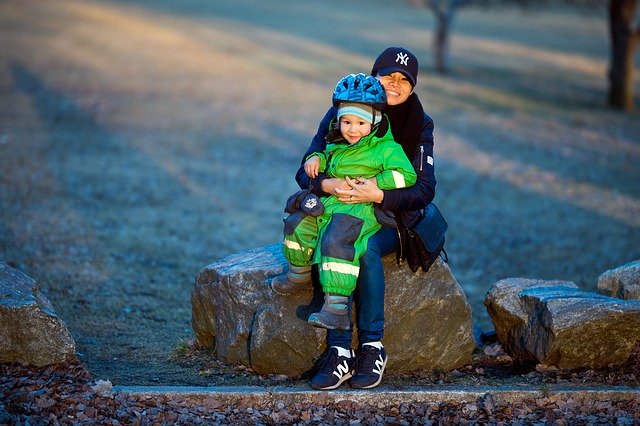
As children age, it can be easier to share in more experiences with them — things like movies, music, sports, hiking, traveling, you name it. And though it may be best to let your kids’ and your own interests drive the ship, here are some general suggestions and fun ideas for connecting with school-aged kiddos:
- Include your child in planning routines around family rituals like meals, car trips (or even just daily commutes), preparing lunches, etc.
- Be present with your kid in the car — try to avoid phone calls, the radio, etc., and use time in the car as time to talk and connect (this is a toughie, we know)
- Ask specific questions about your child’s day (not “yes or no” questions)
- Watch something together you both love. Many shows and movies appeal to (slightly older) kids and adults, whether it’s Jumanji, Nailed It, Sugar Rush or Ultimate Beastmaster
- Schedule a “date time” with each child
- Have a pretend campout
4. Gifts
Children whose primary love language is gifts interpret love through the ritual of gift giving and receiving.
*Note: an actual gift is an expression of love, not a bribe or a reward/payment for completing a chore.
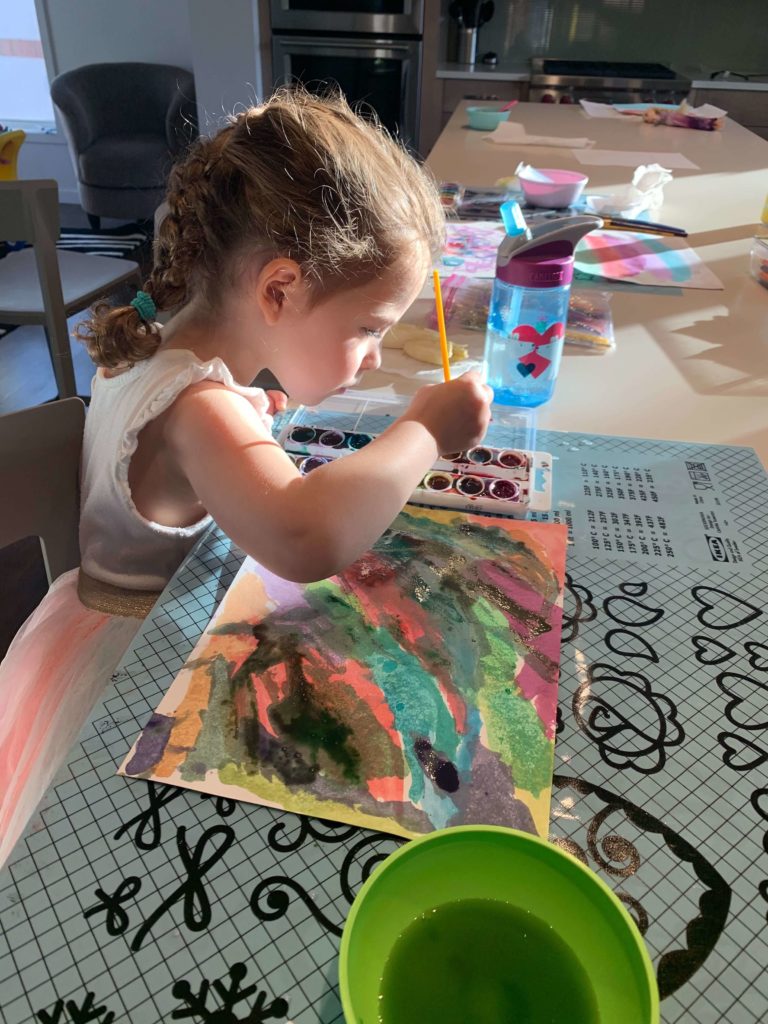
Personally, I think this is (somewhat counterintuitively) the most difficult love language to speak with little children, because so many of us (raising both hands here) worry about the psychological and environmental implications of the excessive accumulation of unnecessary STUFF while simultaneously struggling to teach our young children about graciousness and gratitude.
^^Add to this that for many people, FOOD is their preferred form of gifting… it’s a whole ‘nother problem. We all joked that this could be the sixth love language: sweets. An occasional treat is fine here and there (obviously) but let’s all agree to try to avoid making sweets the go-to expression of love and care. It could be unintentionally teaching children to rely on food to deal with their emotions.
But for children who speak in the love language of gifts, the gesture and the intent are the most meaningful aspects.
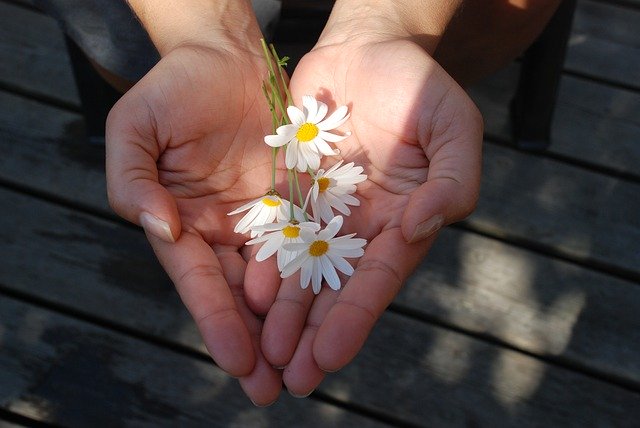
A word of caution: Chapman suggests steering away from toys as much as possible, but if you do choose to go that route, think about what the toy(s) communicates. Suitable toys/gifts, Chapman describes, “should help a child learn how to focus his attention with enjoyment.” In general, open-ended toys (such as legos, blocks, play dough, dress-up clothes, toy animals, cooking sets, art/craft supplies etc…) cultivate children’s imagination and creativity best.
Keep in mind that excessive gifting can result in a loss of meaning and “specialness.” When kids get too much, they learn not to appreciate anything. For enthusiastic gift-givers, the prospect of giving less may seem dispiriting, but the process of really carefully selecting gifts will amplify the experience and ultimately help foster a more long-term, meaningful expression of love.
Here are some ideas for connecting with your child who speaks the love language of gifts:
- Make a “show” of items you’re getting your child anyways (i.e, . a school lunchbox, a new sippy cup, or a new pair of snow boots); merely wrapping something up can — like magic — transform the mundane into “gifting”
- Keep a small collection of inexpensive gifts so you always have something on hand for an appropriate moment to offer a gift
- Prepare your kiddo’s favorite meal or snack as a surprise
- Start a collection of gift wrapping paper or bows/boxes
- Send small tokens or postcards to your child in the mail (kids LOVE getting mail!)
- Give coupons to your child (and wrap those suckers up!) as a fun way to transform an activity into a gift
- Have a special plate or bowl for extra special snacks/treats
- Plan a treasure hunt for a gift
- Tuck something into your child’s lunchbox
- Have a special place for your child to store little gifts
5. Acts of Service
If your child’s primary love language is acts of service, she understands love most palpably through offers/offering to do things for others. Some examples Chapman discusses in the adult version of The Five Love Languages (for couples) are things like taking out the trash, getting your partner’s car serviced, mowing the lawn, folding the laundry, or doing the taxes. They’re not sexy acts, but they can be important symbols of love nonetheless.
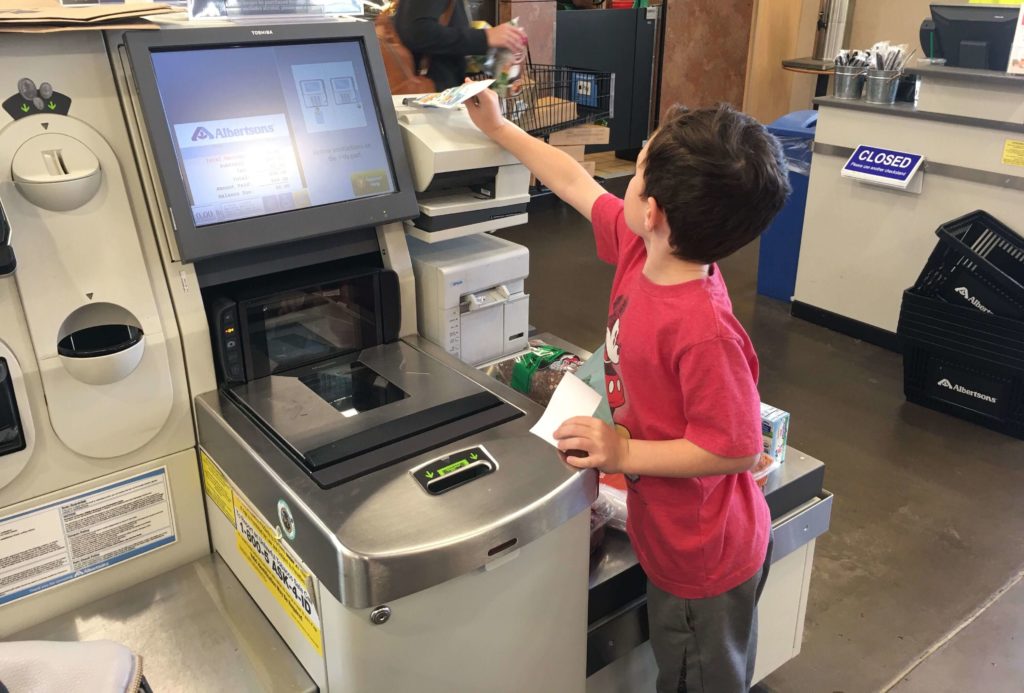
Chapman reminds us that as parents, we want to offer appropriate acts of service to our children — it’s a fine line between just “doing sh!t” for them and doing things for them.
The key here is to strive to offer acts of service that help kids become independent (or at least move in that direction) and grow as humans. I like how Chapman puts it: “We serve our children; but as they are ready, we teach them how to serve themselves and then others.”

If you determine that your child speaks in acts of service, do not feel that you need to jump at your child’s every request. No. (Please.)
However, you may want to be more responsive (or at least understanding) of her requests than you might based on instinct alone. Most importantly, be cognizant of the fact that your response to any request “matters more,” so try to be as thoughtful and gentle as possible, even when denying a request.
Most of us probably aren’t wanting for ways we can serve our kids (I mean — YOU’RE WELCOME for carrying you, birthing you, feeding you, clothing you, cleaning you, wiping your butt, etc., etc.) — but: here are ways to offer your services to your children (ahem) in ways that they will understand and interpret as your love for them:
- Help your child learn about something she’s interested in (dinosaurs, cupcakes, robots, etc.)
- Help your child practice something he’s working on (an instrument, sports, a craft, making piles, counting, sorting colors, etc.)
- Turn your bedtime routine into an act of service by laying out your child’s PJs or favorite book, or perhaps rubbing her back or snuggling for a minute
- Pull out your child’s favorite toys for after school or nap-time
- Make your child a special breakfast
- Go into your child’s classroom and read a book to the class (if volunteers are allowed…)
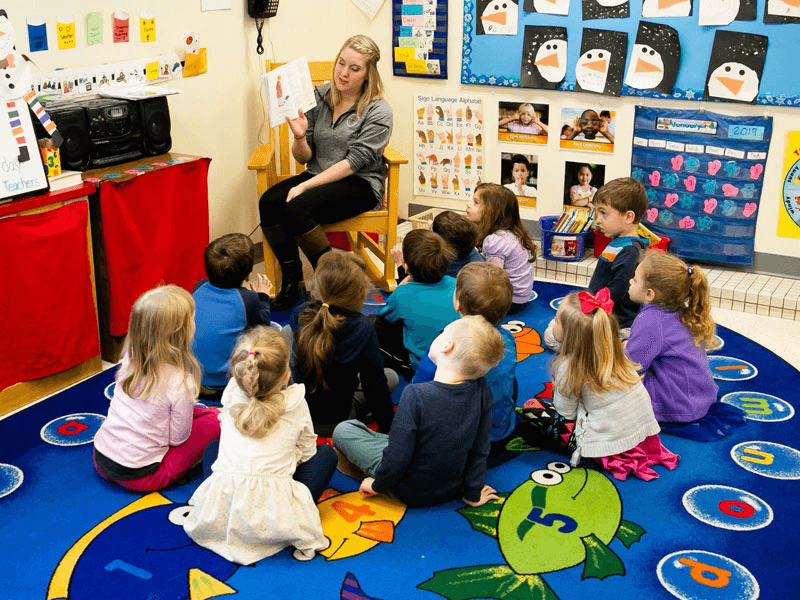
Conclusion
Parents! Remember, at the end of the day: young children need all of this from as many slants as they can get. With little kids, more love is more love is more love — and that’s a good thing.
We don’t want you to stress out about which love language your child speaks (and remember, before kindergarten — they don’t have a “primary language” anyways); instead, we hope you take delight in the fact that there are SO many ways we can share love with our kiddos. Hugs!
If you’re interested in learning more, definitely check out Gary Chapman’s book — it’s a quick read that packs a big punch.
Thanks for a wonderful read! I have three grandchildren that I love spending time with.
Loved the article – good reminders to use every day.
Great article! Loved the examples you give for each love language!
Thank you Brit for this article. My kids are a bit older (18 & 16) but I have still learnt something about how to interact better with them. I appreciate this.